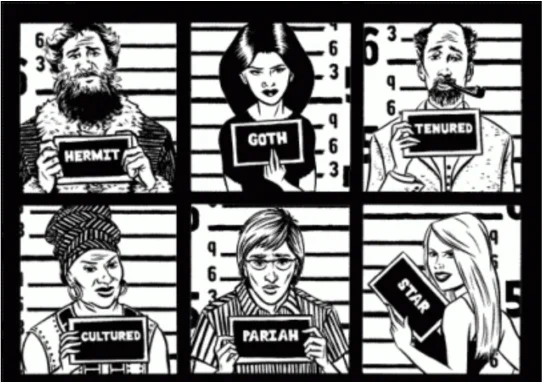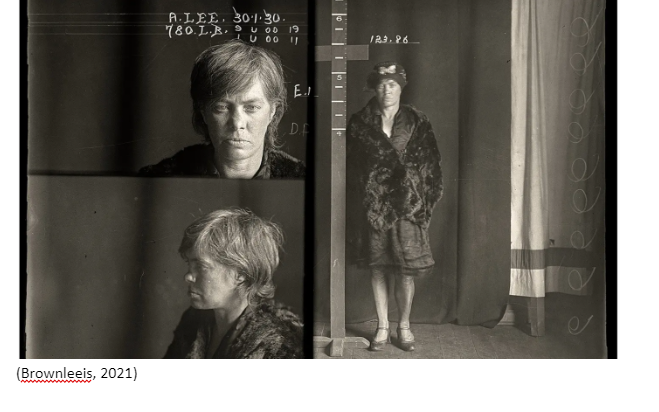Understanding Social Order and Deviance
Symbolic interactionism as used by Herbert Blumer (1969) represents that social order is constructed through social interaction and negotiation between individuals, which in turn uses common language and symbols to create shared meanings. According to labelling theorist, if a person is defined as a deviate, irrespective of whether they are objectively deviate or not, negative consequence will result. In other words, one views themselves from the perspective of the others, and control their behaviours accordingly (Murray, 2017). Thus, if they are labelled as troublemakers, they see themselves as
 troublemakers. The primary groups, including the families and peers constitutes the significant others are the reference groups who provide a perspective to a person (Murray, 2017).
troublemakers. The primary groups, including the families and peers constitutes the significant others are the reference groups who provide a perspective to a person (Murray, 2017).

Mead (1918) provides the central element of labelling theory that the society usually response to a criminal act with hostility towards criminals. Thus, there is no understanding, sympathy and forgiveness, but stigma and anger. Thus, a publicise criminal labelling cannot be a justified form of punishment. It brings inevitably a stigma and there is no independent justification. There cannot be a justification for public criminal labelling. It undermines or is not found in the communicative account of the punishment or the deterrence theory (Hadjimatheou, 2016).


The negative ramification of criminal labelling is found in the arguments of Tannenbaum (1922: 154-155), who stated that prison is an equaliser and an offender once stamped as a criminal and imprisoned is excluded and is deprived of their original identify. The stamping process labelled a person to be a deviant from social norms often defined and dramatized by the society (Krohn, et al., 2013). There is a status degradation of the person pushing their total identity to that of a lower status (Garfinkel, 1956).
The labelling of criminal is, thus, a reason for increase of reoffending, amplified anti-social behaviour, and more offending. Punitive intervention such as custodial punishment causes increase in offending rather than deterrence (Farrington & Murray, 2013). However, the labelling theory has an important part in criminology. For example, victim labelling is an important part in criminal justice. Justice cannot be delivered if a person is not labelled a victim. While some may not desire to be labelled a victim, they may prefer to be labelled survivor, it gives them more courage to speak up for their rights. A criminal justice system sensitive to the interests of victims has legitimacy. Without such sensitivity and the active involvement of the victims, a criminal justice system cannot attain its legitimacy (van Dijk, 2019).
Labelling has been used as a stick by those who have the power to impose their definition of a situation upon a person and label the person with a deviant role (‘thief’, ‘junkie’, or a ‘gangster’) to spoil their identity and the role will be the primary role of the person who will re-enact permanently (Pitts, 2012). Robbery is a serious offence that attracts higher sentences than other crimes except for rape and murder. There is the use or threat of violence. However, there are many minor forms of offences, such as snatching a bag or a mobile phone, which could be charged as robbery. This is not a fair labelling. A sudden impulsive bag snatching is brought in the same category as a major armed robbery. This places the burden on the administration of justice to determine the level of use or threat of force against the justification for sentencing the act of robbery (Horder, 2019).

The statutory labelling of robbery under a single term and category creates the problem of proving a clearer picture on the kind of act involved in the crime. Robbery covers a wide and different ranges and degree of violence or force that is used or threatened. The umbrella labelling throws up the problem of analysing and assessing the data regarding robbery and the natural and critical factors involved in the crime. It is observed that the percentage and degree of violence used in actual practices is relatively small. This raises a critical question om the nature of violence and the behaviour of the offenders. Normandeau (1968) holds robbers as primarily thieves and not a special class, who rarely use force. The use of violence is an isolated act. Thus, the violent offender class cannot be applied to robbers without validating it with factual data. The view on use of violence, which is the main characteristic defining robbery, implies a general labelling of robbers as those with a violent streak in them. This seems to be an unfair labelling as the observation above shows (Sagalyn, 1971).

To conclude, labelling generally does represent best administration of criminal justice. It lacks sensitivity towards the interest of the victims as well as to offenders. The case of robbery is a good example validating this statement.
 It will be a difficult task to set up a fair labelling practice in the criminal justice system, which is likely to stamp an offender in perpetuity as a deviant. Looking for further insights on An Analysis of Criminological? Click here.
It will be a difficult task to set up a fair labelling practice in the criminal justice system, which is likely to stamp an offender in perpetuity as a deviant. Looking for further insights on An Analysis of Criminological? Click here.
Bibliography
Blumer, H., 1969. Symbolic Interactionism: Perspective and Method. s.l.:Prentice-Hall.
Garfinkel, H., 1956. Conditions of Successful Status Degradation Ceremo- nies.". American Journal of Sociology , Volume 61, p. 420 .
Farrington, D. P. & Murray, J., 2013. Empirical Tests of Labelling Theory in Criminology. In: D. P. Farrington & J. Murray, eds. Labeling Theory Empirical Tests. s.l.:Transaction Publishers.
van Dijk, J., 2019. Galona’s review of victim labelling theory: A rejoinder. International review of victimology, 25(1), pp. 125-131.
Hadjimatheou, K., 2016. Criminal labelling, publicity, and punishment. Law and Philosophy, 35(6), pp. 567-593.
Horder, J., 2019. Ashworth's Principles of Criminal Law. s.l.:Oxford University Press.
Krohn, 1. M. D., Lopes, G. & Ward, J. T., 2013. Effects of Official Intervention on Later Offending in the Rochester Youth Development Study. In: D. P. Farrington & J. Murray, eds. Labeling Theory Empirical Tests. s.l.:Transaction Publishers.
Mead, G. H., 1918. The psychology of punitive justice. American journal of sociology , 23(5), pp. 577-602.
Murray, J., 2017. Labeling Theory Empirical Tests. s.l.:Taylor & Francis.
Normandeau, A., 1968. Patterns in robbery. Criminologica, Volume 6 , p. 2.
Pitts, J., 2012. Reluctant criminologists: Criminology, ideology and the violent youth gang. Youth and Policy , Volume 109 , pp. 27-45.
Sagalyn, A., 1971. The Crime of Robbery in the United States An Assessment of Studies and Related Data from 1965-1970; a Background Pape. 2 ed. s.l.:National Institute of Law Enforcement and Criminal Justice .
Tannenbaum, F., 1922. Wall shadows: A study in American prisons. s.l.:GP Putnam's sons.
- 24/7 Customer Support
- 100% Customer Satisfaction
- No Privacy Violation
- Quick Services
- Subject Experts



